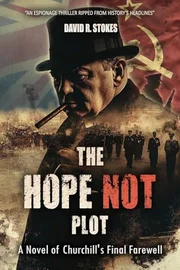It’s 1965 and Churchill, the former prime minister of the United Kingdom, is near death. As the nation, and much of the world, prepares to mourn him, some nefarious elements see an opportunity: The funeral will certainly attract powerful figures from all over the world, and it creates a fine opportunity for chaos—or so goes the thinking of some leading members of the KGB. The Cold War is raging, and it’s spawned a plan in the Soviet Union called KOBA, which involves placing explosives in Churchill’s coffin. They would be set off during the service, killing “many, many others in the church,” and after the initial attack, “long-dormant agents provocateur…would launch an orchestrated wave of precision bombings and assassinations” all over the world. It may sound like a somewhat bizarre way to kick off an operation, but Soviet spies have long been developing assets in other countries for a situation such as this; they include leftist sympathizers in Northern Ireland, who are “particularly susceptible to recruitment” by the KGB. It’s an ambitiously sinister plan, but it’s not one that goes completely undetected. When suspicions regarding the funeral ceremony are brought to the attention of U.S. President Lyndon Johnson, he takes action: Not only does he decide not to attend the memorial services, but he also consults former CIA director Allen Dulles, who, along with many other government operatives, recognizes the seriousness of the situation, which could easily spiral out of control.
The story begins with a rather bland speech from 1960s-era Prime Minister Harold Wilson (“We are on the threshold of an extraordinary moment in the history of the realm”); a bit later on, there’s a similarly unexciting flashback to Churchill’s final public appearance in 1964, in which a woman unnecessarily explains to her young daughter, “Sweetheart, that is Sir Winston Churchill and his wife, Lady Churchill.” Nevertheless, as the pages turn, so does readers’ anticipation regarding the wild spy mission, which involves a large cast of diverse characters; they include a couple in the U.K. that “had dedicated themselves to Soviet intelligence for nearly three decades, their commitment unwavering despite upheavals and betrayals,” as well as a frazzled American spy who, before the threat of KOBA came to the CIA’s attention, had been living a very unhappy existence in Rome. The lively mix of real-life historical figures and Stokes’ fictional creations keeps events moving briskly along, and that includes the action scenes; in one, a character makes quick work of his adversaries by firing “three shots with great poise and precision, dropping all three men in less than two seconds.” And, of course, there’s always the chance that world-changing fiascoes will occur if the plan actually succeeds. The potential for such chaos will give readers plenty of good reasons to stick with the novel all the way to its conclusion.
